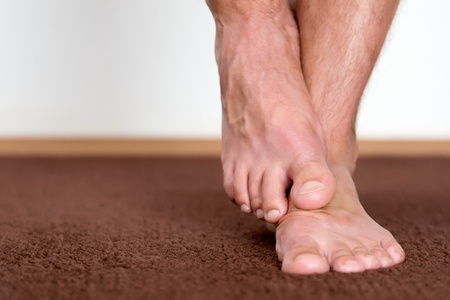
Winter is right around the corner, so it’s time to prepare for the cold weather. The colder temperatures can make our feet feel numb and frozen, resulting in painful disorders, such as chilblains. Today, Dr. Eric Ricefield, Dr. Mark Yagodich, and Dr. Aliza V. Eisen of greater Philadelphia’s Your Next Step Foot and Ankle Care Center are sharing information regarding this condition.
When the colder weather arrives, you might try to warm up with a heater, a hot water bottle, or a hot shower. But subjecting your feet to severe temperature changes can cause chilblains. Let’s look at what chilblains are, who is at risk for them, and what to do if you get them this winter season.
Chilblains: What Are They?
Chilblains are small purple/red, itchy, swollen spots that grow on the body’s extremities, most commonly the feet. Tender and painful to the touch, chilblains are an irregular reaction to severe cold weather.
When the skin feels cold, blood vessels tighten, and then when the skin is warmed up, blood vessels dilate. If this happens too fast, the vessels can be damaged, and fluid can seep into the surrounding tissue, resulting in inflammation.
Who’s at Risk for Chilblains?
Chilblains most commonly occur in women and children, and the elderly but can develop at any age. They may affect you if:
- You’re a smoker
- Have poor circulation
- You have peripheral arterial disease
- You suffer from an auto-immune disease
- You have a family history of the condition
- You don’t keep your feet dry and warm when outdoors
- You are on medications that cause blood vessels to constrict.
Preventing Chilblains:
- Keep your feet warm
- Try not to go from cold to hot too quickly
- Don’t walk barefoot
- Reduce exposure to the cold
- Remain active to boost your circulation.
Treating Chilblains:
- Resist the urge to scratch
- Use calamine lotion to soothe the itching
- Keep your feet warm by wearing woolen or cotton socks.
Consult your podiatrist if:
- The chilblains are extremely painful
- The skin appears to be infected
- The chilblains crack or become sore
- There is no improvement after a week.
At Greater Philadelphia’s Your Next Step Foot and Ankle Care Center our podiatrists are experienced in diagnosing and treating chilblains and other foot issues. If you are worried about developing chilblains this winter, reach out to the experienced team at Greater Philadelphia’s Your Next Step Foot and Ankle Care Center. Click here to locate contact information for the office nearest you.
